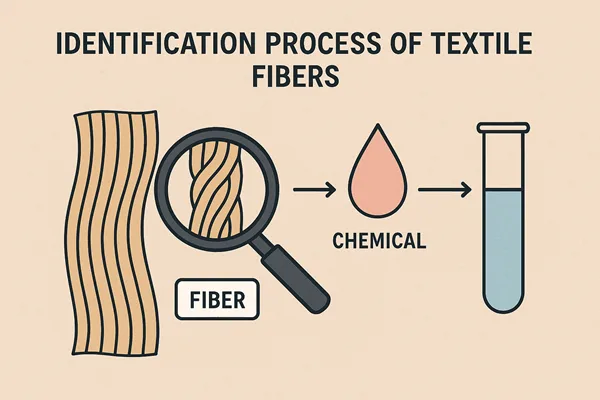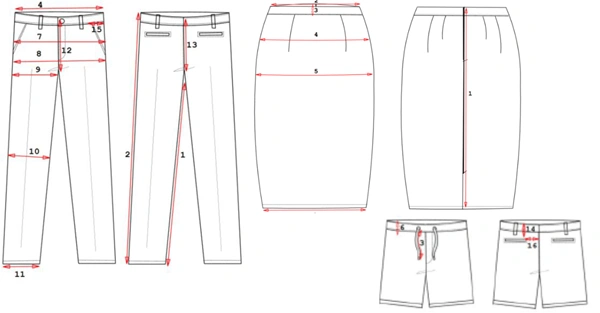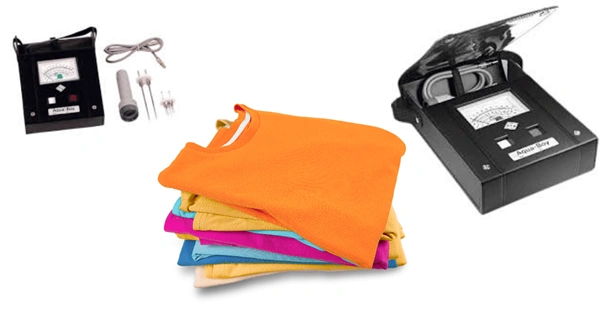Identification Process of Textile Fibers: A Complete Guide
The identification of textile fibers is an important component of the textile industry, forensic science, fashion designers, the automotive industry, and others. However, this process is quite common across different industries, which is conducted very differently in each. Here I am writing a complete guide on the Identification Process of Textile Fibers.
The American Association of Textile Chemists and Colorists (AATCC) lists microscopy as a way to identify fibers, but it must be used with caution on manufactured fibers since they are created in a variety of modifications that alter their presence.

AATCC also lists ‘reaction to flame’ as a test method with the following categories for test reactions:
- Melts near flame
- Shrinks from flame
- Burns in flame.
ASTM International, in their volumes on textiles, lists infrared spectroscopy as the favored method for fiber identification and adds, ‘additional physical properties of the fibers such as density, melting point, regain, refractive indices, and birefringence that are useful for confirming the identification.
The identification Process of Textile Fibers is carried out in many ways. The most used ways are:
- Physical test
- Burning test
- Feeling test
- Microscopic identification
- Chemical test
To get the complete details for the identification of fibers, some other technical tests are also required:
- Microscopic identification
- Coloring with dyestuff solution
- Solubility test
- Staining
Natural Fibers
Natural fibers like cotton, jute, flax, etc, are discussed below. Find it out!
Cotton Fiber Identification
Different tests can be carried out to test cotton fibers. For an acceptable and reliable result, at least two or more different methods can be combined. Non-technical tests like the feeling or burning test,s don’t need any special equipment or setting.
Burning test: How a fiber reacts to the heat from an open flame is an important guide to the identification of fibers. It derives the results like not melting, burning, smelling like paper burning, etc.
Cotton fiber burns to produce a smell like paper burning. Isn’t it interesting? Yes, paper is also produced from cellulose just like cotton. 88-96% constituents of cotton are cellulose. It gives a rapid burning. There is no leftover ash from this test.
Feeling test: Types of Cotton are smooth and soft to human skin, which is unresponsive and feels good against the skin.
Chemical or solubility test: Cotton is easily dissolved in 70% H2SO4 and cupramonium hydroxide.
Microscopic Identification: Cotton fiber is easily identified by its kidney-shaped cross-section and natural convolution in the longitudinal view.
Jute Fiber Identification
Feeling test: Jute fiber is stiff and harsh. The harsh hand feel of jute feels bad against the skin.
Burning test: It doesn’t melt. It burns easily with a smell like paper burning. Jute has cellulose in its structure, and paper is also a cellulosic material.
Microscopic Identification: Jute fiber is identified by a polygonal-shaped cross-section and many ultimate cells in longitudinal view.
Solubility test: Jute is dissolved by 70% H2SO4 and gives a yellowish brown color.
Flax Fiber Identification
Burning test: Flax, which is also a cellulosic fiber, burns like paper. Quick and bright burning test with afterglow. The color of the burning residue is pale grey. Powdery ash content is left.
Microscopic View: Microscopic longitudinal and cross-sectional view helps to identify the flax fiber.
Wool fiber Identification
Burning test: The flame is steady but more difficult to burn. The smell of wool burning is like the burning of hair.
Chemical test: Concentrated sodium hydroxide and sodium hypochlorite dissolve the wool fiber. Wool also slowly dissolves in 70% Nitric acid.
Silk Fiber Identification
Burning test: The burning smell of silk is like horn or hair. The combustion is from a small flame that is slowly self-extinguishing.
A crystalline ash is left by black, friable cinder or weighted silk. Wool burns like the smell of burning hair, whereas silk burns with a more disagreeable smell.
Solubility test: Silk is dissolved by sulphuric acid and lithium hypochlorite.
Man-made Fibers
Polyester Identification
Burning test: Polyester fiber melts on heating. It forms irregular beads and also gives a sweet aromatic scent.
Chemical test: Heated meta-crysol and heated ortho-phenol dissolves polyester.
Poly-amide fiber Identification
Burning test: These fibers are melted like glass. They also form beads. Again, their burning smells like amine.
Chemical test: Polyamide fibers are dissolved in cold meta-crysol, 60% sulphuric acid, 90% formic acid and hydrochloric acid.
Acrylic Fiber Identification
Burning test: On burning, this fiber forms small black beads.
Chemical test: acrylic is soluble in di-methyl formamide
Acetate Fiber Identification
Burning test: Acetate fibers melt on burning. This fiber gives vinegar or acetic acid like smell. Upon cooling, acetate fibers form small black beads.
Chemical test: Acetate fiber dissolves in acetone solution.



